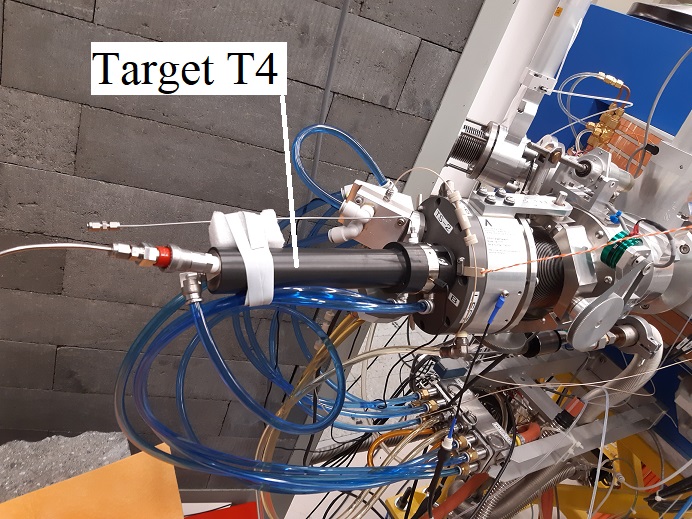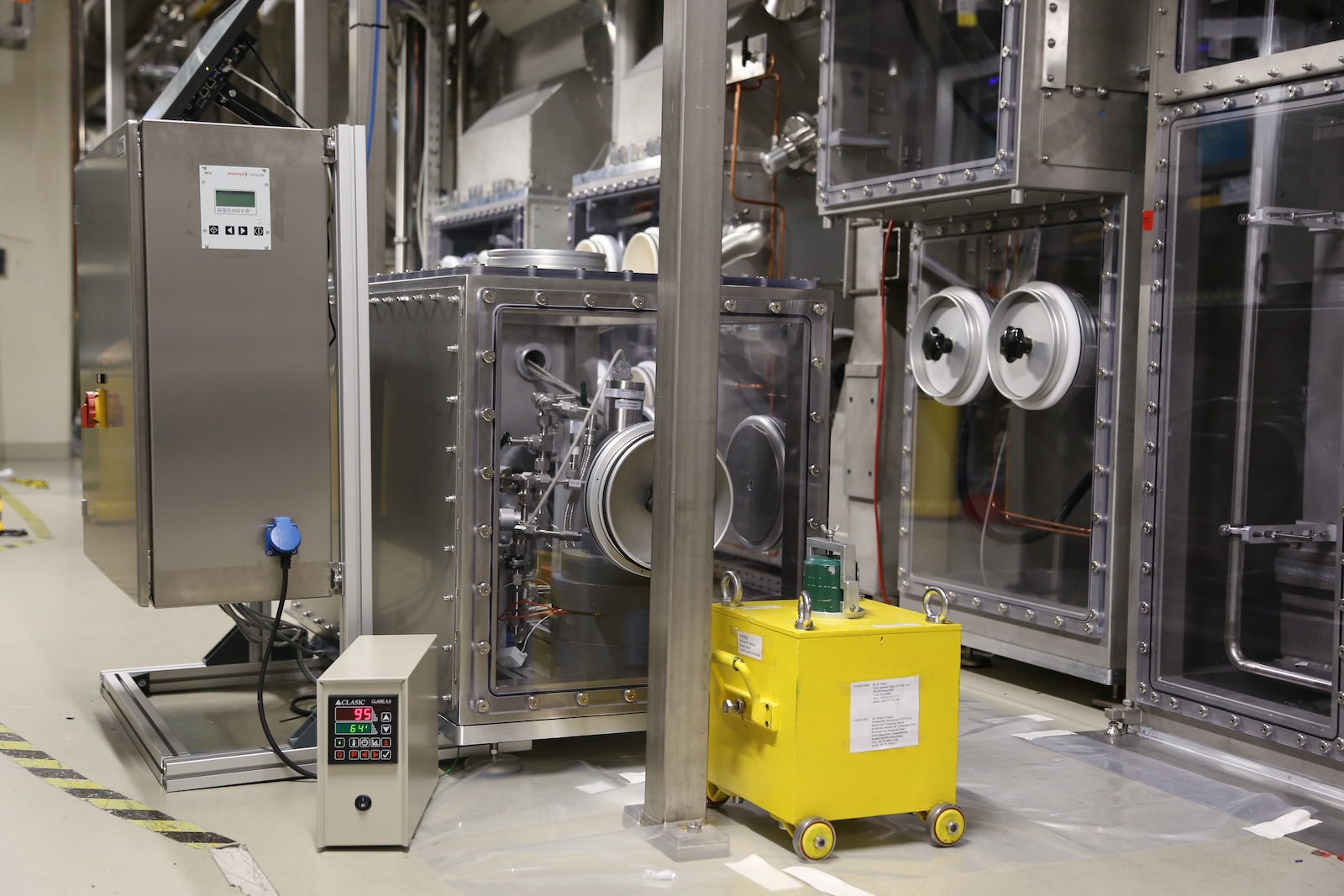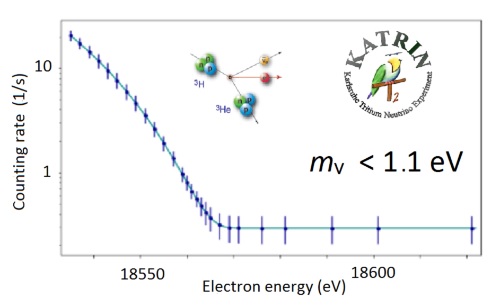
Neutrino mass measurement
Neutrinos are the most numerous massive particles in the Universe. The oscillation experiments proved that the neutrinos created in weak interaction processes are a quantum superposition of three states with the masses m1, m2 and m3. The experiments also proved that the mass of at least one of these states is larger than 0.05 eV. Precise measurements of the uppermost part of the tritium beta spectrum yielded actual upper bound of the electron antineutrino mass of mν < 2 eV (4 milionths of the mass of an electron). The used methodic is a model independent one relying on the laws of energy and momentum conservation only. Cosmological observations provide the sum m1 + m2 + m3 < 0.2 eV but substantially larger or smaller values can be obtained in dependence on applied models and data sets. Another possibility relies on assumption of existence of the neutrinoless double beta decay in Nature. From the measurement of its half-life was deduced the upper limit on neutrino the mass in the range 0.036-0.156 eV. The result, however, strongly depends on the nuclear models predictions.
Aiming to bring the measurement of the tritium beta spectrum to current technological limits, the international project KATRIN (the KArlsruhe Tritium Neutrino experiment) KIT - KATRIN was founded in 2001. The founding members are physicists from institutions in Germany, Russia, USA and the NPI of the Czech Academy of Sciences. The experiment strives for nearly a tenfold improvement in the neutrino mass sensitivity down to 0.3 eV. In comparison with the best previous experiments this requires a hundred times increase of the beta particle intensity and improvement in the energy resolution while keeping the lowest possible background.
The KATRIN measuring complex is installed at the Karlsruhe Institute of Technology (Germany) that enables to utilize the unique tritium laboratory of that institute. The laboratory supplies the gaseous molecular tritium into a 16 m long windowless tritium source having five hundred sensors ‒ which together with temperature of -193 °C stabilized to ±0.03 °C - is apparently the most complex cryostat built up to now. The tritium source provides 1011 beta particles per second the movement of which is governed by almost thirty superconducting magnets.
The energy analysis of beta particles is carried out by an electrostatic retardation spectrometer with adiabatic magnetic collimation (the MAC-E-filter). This principle allows to analyze 18% of beta particles emitted into a full solid angle with the good resolution of 2.8 eV at 18.6 keV. In order to achieve these parameters the main spectrometer has the length of 23 m and the diameter of 10 m. The spectrum is taken point-by-point by stepwise changes of the retarding voltage in the region of 18.6 kV that has to be stabilized with a relative precision of ±3x10-6. At the end of the 70 m long KATRIN complex, there is a semiconductor detector of electrons composed of 148 independent pixels.
In the frame of the KATRIN project, we are responsible for the calibration of the main spectrometer energy scale as well as for the verification operation of the whole system, in particular that of the tritium source. To achieve this goal we have developed a gaseous radioactive source of monoenergetic conversion electrons that is based on the decay chain 83Rb/83mKr/83Kr with the activity of 83Rb up to 10 GBq. The 83Rb is produced with the cyclotron of our Institute (Fig. 1.). We have further developed the appropriate injector of the gaseous 83mKr and worked closely together to implement it at the KATRIN tritium source (Fig. 2.). The first tests of KATRIN utilizing this source were accomplished in July, 2017.

Fig. 1.: Target T4 for production of 83Rb in reaction natKr(p, xn)83Rb installed on the TR-24 cyclotron proton beam (proton energy of 24 MeV). The target windows for the proton input are cooled by gaseous helium. The own production chamber inside of the target is cooled by the water circuit.

Fig. 2.: Equipment for the injection of the 83mKr from our source into the KATRIN tritium loop and the yellow source transport container. For the safety reason the equipment is inside in the box (in the middle). On the left is the electric distribution cabinet and a controller for the oven of the equipment.
The KATRIN inauguration took place in June, 2018. The circulation of our gaseous 83mKr in tritium loops was successfully tested in October, 2018. During the spring of 2019, the 83mKr has circulated together with tritium in order to explore a space charge in the beta particle source. Then it was launched, usually within 3 several month campaigns per year, a continuous measurement of tritium beta spectrum for the neutrino mass determination. These campaigns were interlaced with measurements with electrons from our sources. Already the beta spectrum measured in the 1st campaign lowered the limit on the neutrino mass by almost the factor of 2 (Fig. 3.). The analysis of the compound data from 1-5 campaigns provided new upper limit of mν < 0.45 eV. The full sensitivity should be achieved after planned 1000 measuring days, i.e. within the 18th campaign at the end of 2025 year.

Fig. 3.: Energy spectrum of beta electrons from the radioactive decay of tritium obtained during the first measurement campaign in the 2019 year (561 hours). The uncertainty bar of each of the measured points is increased by a factor of 50 for clarity. The full line describes the expected spectrum shape in the case of zero neutrino mass.
During 2026-2028 the KATRIN complex will be used in the experiment TRISTAN (TRitium Investigation on STerile to Active Neutrino mixing) the aim of which is the search for the sterile neutrino with the mass of several keV. These neutrinos would represent the significant fraction of the till now hypothetical dark matter in the Universe. We will prepare our sources for this experiment too. Later, starting in 2029 year, the experiment KATRIN++ is planned. Using the tritium in atomic state instead in molecular one and the differential beta spectrum measurement method the sensitivity on the neutrino mass should achieve of 0.04 eV. The relevant research and development regarding these experiments has been underway for several years.
An interview (in Czech language) about the Czech road to KATRIN can be found here.
An article (in Czech language) by Vladimír Wagner on the first scientific result of KATRIN, including the report of the ČT24 TV channel from September 23, 2019 can be found here.
A radio spot (in Czech language) on electron spectroscopy and the NPI of the CAS participation in the KATRIN project can be found here.
Scientists
Mgr. Drahoslav Vénos, CSc. (Head of the group)
Ing. Otokar Dragoun, DrSc. (Emeritus researcher)
prof. Ing. Ondřej Lebeda, Ph.D.
Mgr. Jan Ráliš, Ph.D.
Contact person
Mgr. Drahoslav Vénos, CSc. (venos@ujf.cas.cz)

